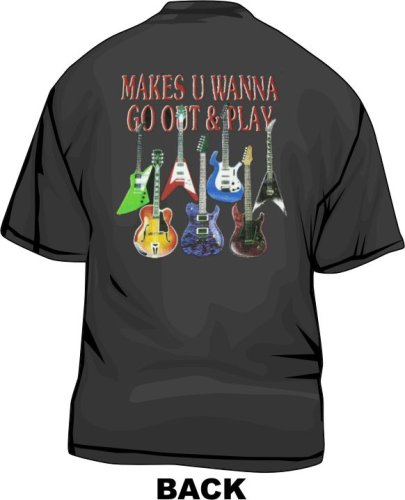
On the list of greatest guitarists of all time there could be literally hundreds of names. There have been so many influential guitarists who have changed the world of music for the better. However, there are certainly a few that stand above the rest. Not only are they incredible in how they play, but they have endured the test of time and really have been inspirational for so many up and coming guitarists.
The one and only Jimi Hendrix is at the top of the list for many reasons. Considered to be by far one of the greatest guitarists in rock music history, Hendrix achieved world wide fame back in the late 1960's. Starting in England he made a name for himself at the Monterey Pop Festival and then later at Woodstock in 1969. He was a pioneer of guitar feedback and was the first to incorporate overdriven amplifiers, which until then were thought of as a way to make bad music. Hendrix played one of the most amazing guitars of all time with his Fender 60's Reverse Headstock Stratocaster.
Second on the prestigious list of greatest guitarists of all time should be the incomparable Jimmy Page. Joining the group The Yardbirds before starting the band known to all as Led Zeppelin, Page was one of the most versatile guitarists in history. He was ranked number nine in Rolling Stone's list of 100 top guitarists of all time. Playing his Gibson Les Paul Classic as well as his Gibson Custom Shop Jimmy Page Double Neck Electric he was pure magic on stage.
Also one of the original members of The Yardbirds, Eric Clapton is a name that is synonymous with amazing guitar playing. With a nickname such as "Slowhand" Clapton won several Grammy Awards and is one of the most successful guitar players and musicians in the 20th and 21st century. With an amazing three inductions into the Rock and Roll Hall of Fame, Clapton is the reason that many youngsters even pick up a guitar for the first time. He was a pioneer for blues-rock as well as psychedelic rock while playing his famous Eric Clapton Artist Signature Stratocaster.
Making this list of greatest guitarists of all time, you can't help but remember Carlos Santana. With his blend of rock, blues, jazz fusion and salsa, his music is truly inspiring. Santana is one musician that can change with the times and adapt his guitar playing to the various types of music he is working on. With a decidedly Latin flair, his music reaches to the core of your soul. Playing on a PRS Santana II named after him or the Gibson SG, Carlos Santana sounds great no matter what music he plays.
Whether your choice for greatest guitarist of all time would be someone in heavy metal like Slash from Guns N Roses or Angus Young from AC/DC or someone more rhythmic like Keith Richards there are certainly many choices out there. The one thing they all have in common is that there is literally no end to their natural talent and their ability to really rock the guitar.
Stop wasting money on 1-on-1 guitar lessons! Check out Steve Krenz's awesome Learn and Master Guitar course, it beats the pants off anything out there. It's the most comprehensive and thorough instructional guitar course available today. Advanced guitarists should check out http://www.madguitarlicks.com for 35 killer licks to add to their arsenal.
john mayer fender stratocaster


